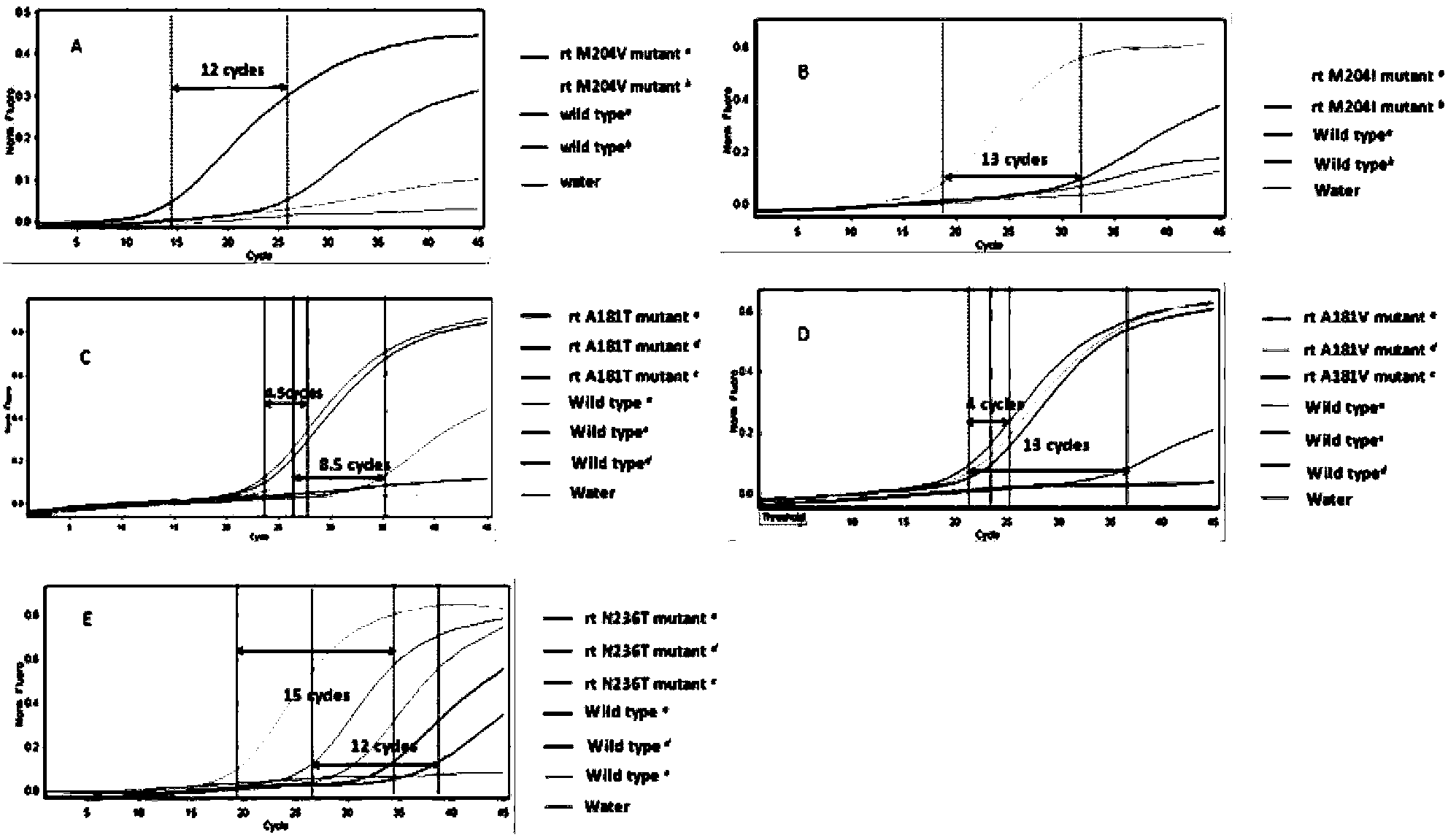Multiplex ligation-dependent probe real-time fluorescence PCR (Polymerase Chain Reaction) kit for detecting drug resistance of HBV (Hepatitis B Virus) lamivudine and/or adefovir
A technology of multiple connection probes and real-time fluorescence, which is applied in the direction of DNA/RNA fragments, recombinant DNA technology, microbial measurement/inspection, etc., to achieve the effect of optimized reaction conditions and low cost
- Summary
- Abstract
- Description
- Claims
- Application Information
AI Technical Summary
Problems solved by technology
Method used
Image
Examples
Embodiment 1
[0041] Example 1 Design of Universal Primers, TaqMan Probes and MLPA Probes
[0042]A pair of universal primers were designed in the alfalfa chloroplast genome by using primer premier 6.0 software, and five TaqMan probe sequences were designed by using Primer Express 3.0 software as the tag sequences of MLPA probes, respectively labeled FAM, HEX, ROX, CY5 and LC red705 fluorescein (Shanghai Sangong). The Tm value of the probe is about 10°C higher than the Tm value of the primer, and the probe self-dimer, hairpin structure and cross-dimer structure are minimum. Firstly, the nucleic acid sequence of HBV P gene was retrieved from the NCBI nucleic acid database, and multiple sequence alignments were performed using clustalx1.83 software. According to the main epidemic types B and C of HBV in China, MLPA was designed to detect rtM204V, rtM204I, rtA181T, rtA181V and rtN236T sites As for the probe, the Tm value of the hybridization sequence of the MLPA probe is greater than 65°C, an...
Embodiment 2
[0046] Embodiment 2 Preparation and application of the kit
[0047] 1. Materials and methods
[0048] patient sample
[0049] Sera from 116 outpatients and inpatients from the Department of Infectious Diseases, Southwest Hospital of Third Military Medical University from March 2012 to June 2013 were collected, all of which were positive for HBV DNA load. This experimental protocol was approved by the Ethics Committee of the Third Military Medical University.
[0050] DNA extraction and PCR amplification before detection
[0051] The HBV genome was extracted using the care HBV RT-PCR Assay v2kit (Capgemini, Germany), and the reverse transcription region of the P gene was amplified using the Prime STAR Max DNA Polymerase Kit (Bao Bio, Japan):
[0052] ccatcatcttgggctttcgcaaaattcctatgggagtgggcctcagtccgtttctcttggctcagtttactagtgccatttgttcagtggttcgtagggctttcccccactgtctggctttcagttatatggatgatgtggtattgggggccaagtctgtacaacatcttgagtccctttatgccgctgttaccaattttcttttgtctttgggtatacatttaaacc...
PUM
 Login to View More
Login to View More Abstract
Description
Claims
Application Information
 Login to View More
Login to View More - R&D
- Intellectual Property
- Life Sciences
- Materials
- Tech Scout
- Unparalleled Data Quality
- Higher Quality Content
- 60% Fewer Hallucinations
Browse by: Latest US Patents, China's latest patents, Technical Efficacy Thesaurus, Application Domain, Technology Topic, Popular Technical Reports.
© 2025 PatSnap. All rights reserved.Legal|Privacy policy|Modern Slavery Act Transparency Statement|Sitemap|About US| Contact US: help@patsnap.com



